Superconducting Carbon Nanotubes composite as Vertical Interconnect for Qubit Integration at Cryogenic Temperature (TU Delft)
- Project leaders: prof.dr. Kouchi Zhang (TU Delft)
- Postdoc: dr. Amir Mirza Gheytaghi (TU Delft) - who succeeded dr.ir. René Poelma (TU Delft).
- International expert: prof. C.P. Wong (School of Materials Science and Engineering, Georgia Tech)
Poster presented by Amir Mirza Gheytaghi at Dutch Materials 2017
(Pdf file,1 MB)
Paper
'Carbon Nanotube Array. Scaffolding Material for Opto-, Electro-, Thermo-, and Mechanical Systems' by Amir Mirza Gheytaghi (TU Delft).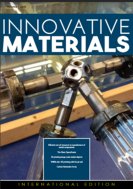
[Innovative Materials, 2018, 3, pp.22-25]
Keywords
Quantum computing, Cryogenic superconducting composite, 3D Interconnects, High-Aspect-Ratio CNT, Interconnect Reliability
Summary
Vertical interconnect that carry the quantum information through the silicon wafer at cryogenic temperature should be reliable, fine-pitch, and high-aspect-ratio. A vertically aligned CNT-bundle coated with superconductor materials has the potential to fulfil requirements in quantum computers.
Background
Quantum computer technology as a new research field, focused on developing devices using the fundamentals of quantum physics theory to overcome the scalable limit of the conventional silicon-based computers. Efficiently integrating many qubits is a key to achieve the quantum computer scalability. Vertical superconductor interconnects that carry the quantum information through the silicon wafer is of vital importance, which should be reliable, fine-pitch, and high aspect ratio.
Problem
Throught Silicon Vias (TSVs) technology has the potential to fulfil the requirements. However, commonly used TSV materials (CU or Al) only reach superconductivity below 1K. On the other hand, Niobium and Niobium Nitride has the highest superconducting transition temperature of elementary and binary superconductors at 9.2K and 16K respectively, but mechanically unreliable at cryogenic temperature.
Aim
We are aiming to fabricate and characterize the vertical interconnect for qubit integration made from novel composite of carbon nanotube arrays with superconductor coating. The main objectives include: i. analyse the interface between the composite tips and superconductive metal pads; ii. understand the kinetics of penetration and bonding of coating to CNT arrays, iii. measure the superconductivity of different coating thickness in cryogenic temperature; iv. investigate the effects of temperature and CNT diameter on the coefficient of thermal expansion (CTE) of CNTs to minimize the CTE mismatch between coating and CNTs. v. study the main failure mechanism of the manufactured interconnects to ensure the cryogenic reliability.
Method
First, CNT array growing on different substrates and optimization of the CVD process; Then, conformal superconductor coating of the fabricated CNT interconnects with ALD; Finally, characterizing the mechanical and electrical properties of the composite at room and cryogenic temperatures.
Results (So far):

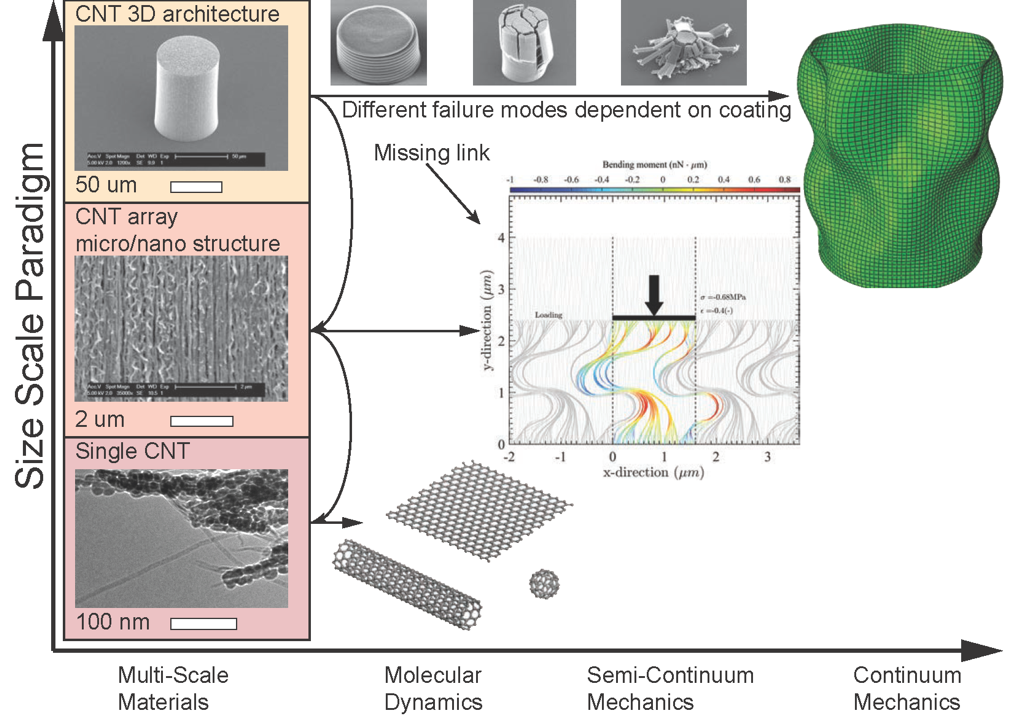
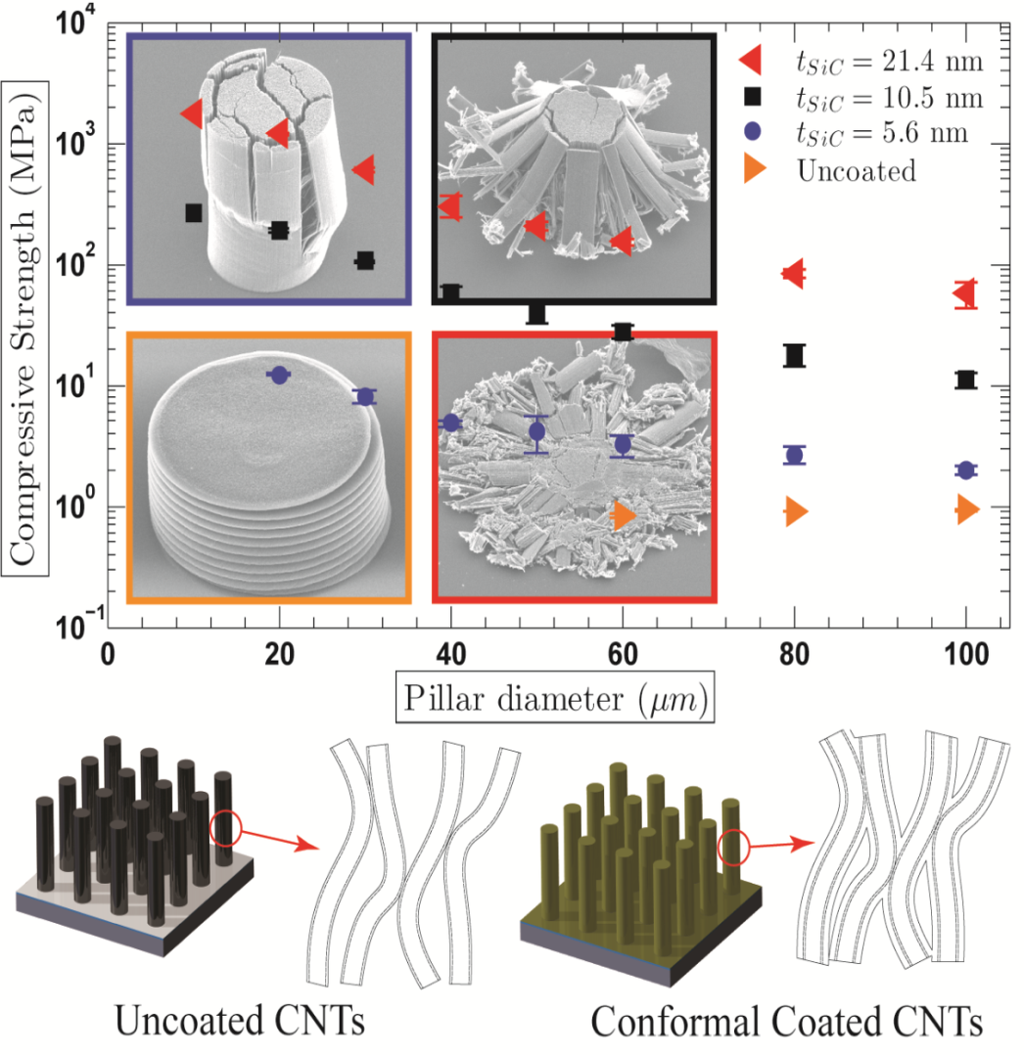
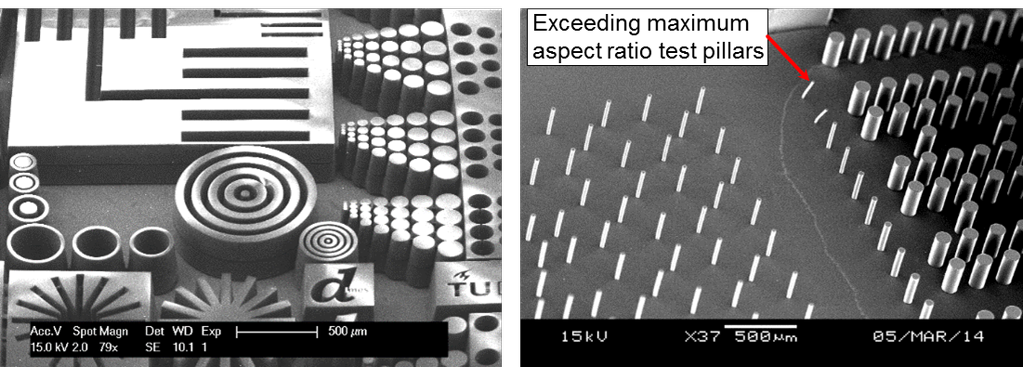
References
- Poelma, R.H., X. Fan, Z.-Y. Hu, G. Van Tendeloo, H.W. van Zeijl, and G.Q. Zhang, Effects of Nanostructure and Coating on the Mechanics of Carbon Nanotube Arrays. Advanced Functional Materials, 2016. 26(8): pp. 1233-1242.
- S. Vollebregt, R. Ishihara, The direct growth of carbon nanotubes as vertical interconnects in 3D integrated circuits, Carbon, 2016. Vol (96): pp. 332-338.
- Silvestri, C., M. Riccio, R.H. Poelma, B. Morana, S. Vollebregt, F. Santagata, A. Irace, G.Q. Zhang, et al., Thermal characterization of carbon nanotube foam using MEMS microhotplates and thermographic analysis. Nanoscale, 2016. 8(15): pp. 8266-8275.
- Li, X., L. Wei, R.H. Poelma, S. Vollebregt, J. Wei, H.P. Urbach, P.M. Sarro, and G.Q. Zhang, Stretchable Binary Fresnel Lens for Focus Tuning. Scientific Reports, 2016. 6: p. 25348.
- Gheitaghy, A.M., S. Sh. Tabatabaei, H. Saffari, G. Q. Zhang, Thermally induced oxidative growth of copper oxide nanowire on dendritic micropowder and reductive conversion to copper nanowire, Micro & Nano Letters, 11(8), pp. 412-415, 2016.
- Poelma, R.H., B. Morana, S. Vollebregt, E. Schlangen, H.W. van Zeijl, X. Fan, and G.Q. Zhang, Tailoring the Mechanical Properties of High-Aspect-Ratio Carbon Nanotube Arrays using Amorphous Silicon Carbide Coatings. Advanced Functional Materials, 2014. 24(36): pp. 5737-5744.
Biography Postdoc
Amir Mirza Gheitaghy has received BS degree from Ferdowsi University of Mashhad (FUM) in fluid mechanics, MS degree and Ph.D. degree from Iran University of Science and Technology (IUST) in thermal science and mechanical engineering, respectively. During his PhD in 2016, he spent ten months as a visiting researcher in microelectronics department of TU Delft on thermal management of microelectronics. After PhD graduation in 2017, he continued collaboration with TUDelft as a postdoc researcher. His research interest includes micro/nanostructured surfaces, nanoscale thermal transport, and electrical analogy.
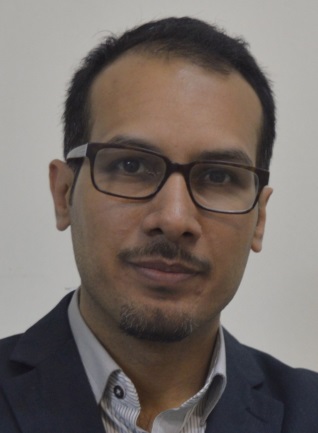
Affiliation
Department of Microelectronics, Delft University of Technology
2628 CT Delft, The Netherlands
Contact: a.mirzagheytaghi@tudelft.nl



